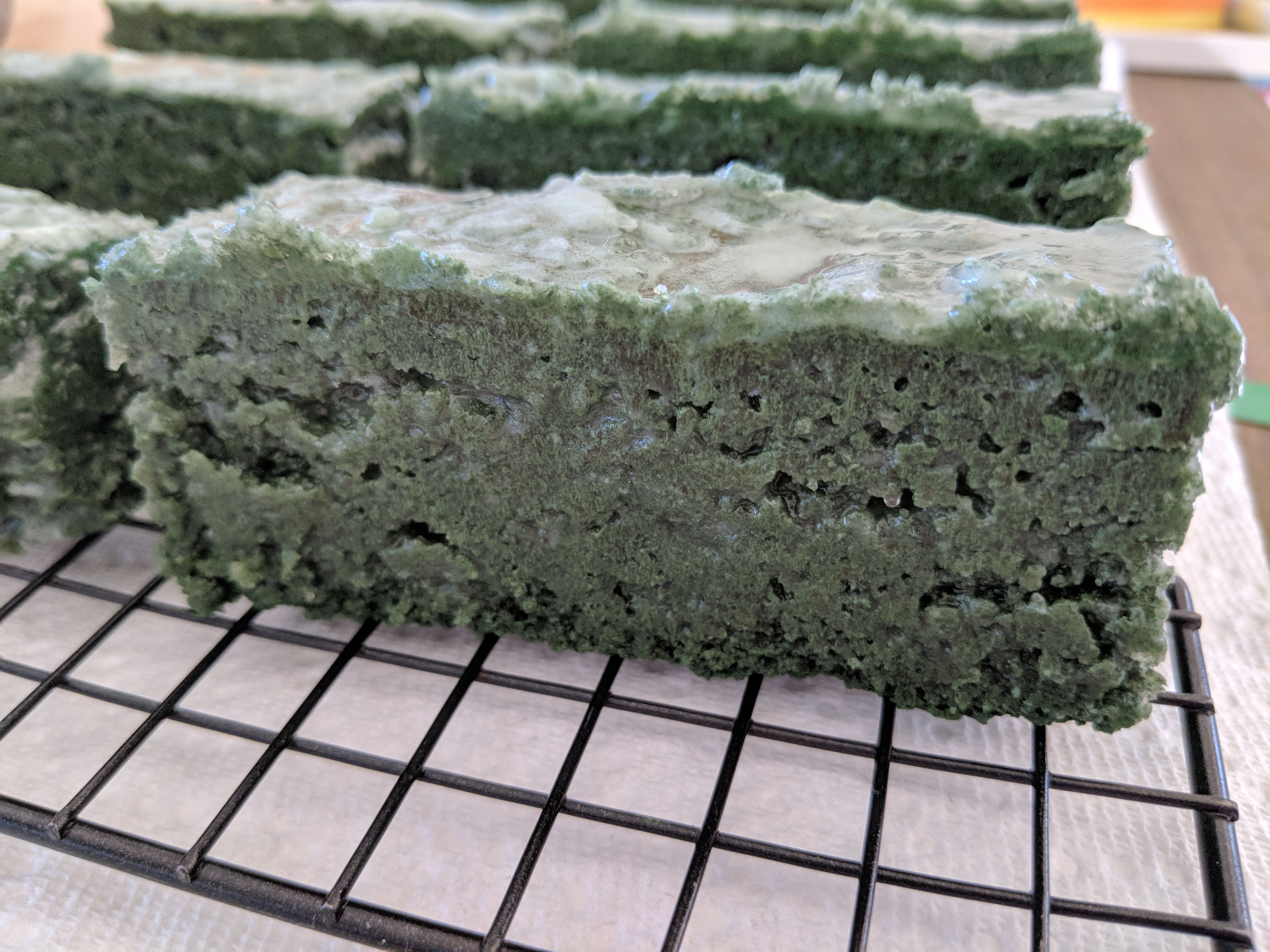I've made a about a dozen batches of soap successfully. I have always used the same recipe which is a derivation of Anne's Shea Butter Supreme from Anne Watson's Smart Soapmaking.
This batch however was a little different. The plan was to make Rosemary/Peppermint soap. I introduced two new items, rosemary leaves and a green pigment powder.
I made the soap batch in my normal method and was just at the very beginning of trace when I added the essential oils (50g total per the recipe), the rosemary leaves (10g) and the pigment powder. I added the entire envelope of pigment powder (57g). As soon as I added the powder I immediately thought it was too much, but I just expected a very dark soap. However, once I started the stick blender again I knew something was wrong. I got a 3 degree rise in temperature, but no thickening of the soap. I blended and blended - WAY longer than I have ever done before - but the batch never thickened. I thought maybe it would happen as the saponification continued so I poured it into the mold anyway. Two days later I still had a LOT of fluid sitting on top of the soap. I checked the PH and it showed 7. I decided to extract the fluid and cut the bars up to see if they will dry. As you can imagine, the "soap" level mas very low since so much of the fluid had not been incorporated. The texture is very strange. I will be very interested to see what the properties of this "soap" are. I'll check the PH of the bars as well in a few days.

I wouldn't have thought that any of the additives would have had the effect it did, so I'm open to ideas about what you think went wrong.
I'm going to make another batch this weekend. No color this time.
This batch however was a little different. The plan was to make Rosemary/Peppermint soap. I introduced two new items, rosemary leaves and a green pigment powder.
I made the soap batch in my normal method and was just at the very beginning of trace when I added the essential oils (50g total per the recipe), the rosemary leaves (10g) and the pigment powder. I added the entire envelope of pigment powder (57g). As soon as I added the powder I immediately thought it was too much, but I just expected a very dark soap. However, once I started the stick blender again I knew something was wrong. I got a 3 degree rise in temperature, but no thickening of the soap. I blended and blended - WAY longer than I have ever done before - but the batch never thickened. I thought maybe it would happen as the saponification continued so I poured it into the mold anyway. Two days later I still had a LOT of fluid sitting on top of the soap. I checked the PH and it showed 7. I decided to extract the fluid and cut the bars up to see if they will dry. As you can imagine, the "soap" level mas very low since so much of the fluid had not been incorporated. The texture is very strange. I will be very interested to see what the properties of this "soap" are. I'll check the PH of the bars as well in a few days.

I wouldn't have thought that any of the additives would have had the effect it did, so I'm open to ideas about what you think went wrong.
I'm going to make another batch this weekend. No color this time.















































